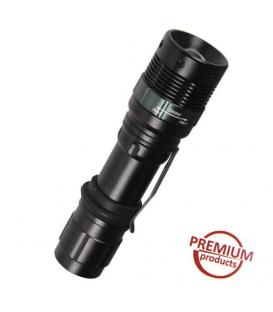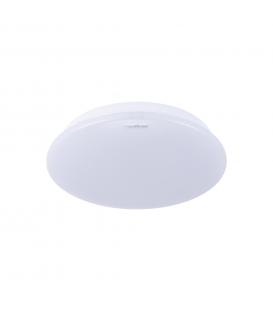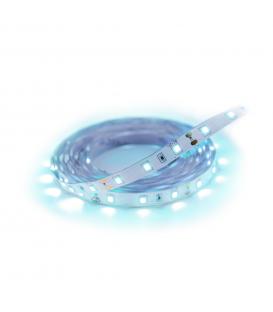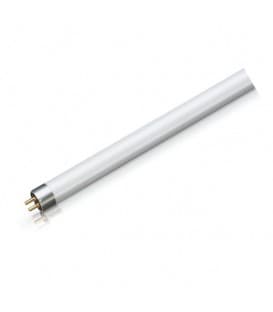Flashlights and torches illuminate your way with portable lighting

Flashlights and torches are portable hand-held lighting devices that provide illumination in various situations. They are designed to emit a focused beam of light, allowing users to see in low-light or dark environments. These devices typically consist of a light source (such as an incandescent bulb or an LED), a power source (usually batteries), and a reflective or refractive housing that directs and focuses the light.
Explanation: Flashlights and torches work by utilizing the principle of producing light through the excitation of electrons in a light-emitting material. When an electrical current passes through the light source (e.g., an LED), it causes the electrons to move to higher energy levels and then release that energy in the form of photons (light). The reflector or lens inside the flashlight helps concentrate and shape the emitted light into a focused beam.
Modern flashlights often use light-emitting diodes (LEDs) as the light source due to their efficiency, durability, and longevity. LEDs require less energy and generate less heat compared to traditional incandescent bulbs.
Benefits:
- Portability: Flashlights and torches are compact and easy to carry, making them essential tools for emergency situations, outdoor activities, and everyday use.
- Versatility: They can be used in a wide range of scenarios, from navigating dark environments to reading, camping, hiking, car repairs, power outages, and more.
- Energy Efficiency: LED-based flashlights are energy-efficient and can provide bright illumination while consuming minimal power, thus prolonging battery life.
- Durability: Flashlights are designed to withstand rough handling and adverse conditions, making them reliable tools for various environments.
- Safety: Having a flashlight on hand enhances personal safety by allowing individuals to navigate unfamiliar or hazardous areas and signal for help.
- Variety: Flashlights come in various sizes, shapes, and designs, catering to different needs and preferences.
Areas of Applications:
- Emergency Preparedness: Flashlights are essential in emergency kits, enabling individuals to navigate during power outages, natural disasters, or other crises.
- Outdoor Activities: Flashlights and torches are indispensable for camping, hiking, fishing, and other outdoor adventures, providing light during nighttime activities and enhancing safety.
- Law Enforcement and Security: Flashlights are used by law enforcement and security personnel for searches, investigations, and crowd control.
- Automotive and Mechanics: Mechanics and car owners use flashlights for inspecting engine compartments, identifying issues, and making repairs.
- Home and Everyday Use: Flashlights are handy for everyday tasks like finding items in dark corners, reading in bed, or going for walks at night.
- Search and Rescue: Flashlights aid search and rescue operations by illuminating areas that are difficult to access or hard to see in low-light conditions.
- Industrial and Construction: Workers in industrial settings or construction sites use torches to illuminate work areas and identify potential hazards.
- Medical and Healthcare: Medical professionals may use small, focused flashlights for examinations, diagnostics, and medical procedures.
In conclusion, flashlights and torches are versatile tools with a wide range of applications, providing illumination and enhancing safety and visibility in various situations. Their portable and efficient nature makes them essential devices for both everyday use and specialized scenarios.
Subcategories of "Flashlights and Torches"
Browse our "Flashlights and Torches" collection
Flashlights and Torches: Illuminate Your Way with Portable Lighting
- 42,84 €Experience the power of our Flashlight indestructible 1 Watt LED Light from the 2AA line, a standout in flashlights...
- 37,47 €Experience the power of our indestructible 1 Watt LED Light from the 3AAA 1W line, a standout in Flashlights and...
- 32,61 €Experience the power of 3W LED with our Industrial Focus Control Flashlight, perfect for all your needs. Discover...
- 23,98 €Illuminate your world with the Flashlight LED Day Light 2D, boasting a powerful 7x5mm LED power line. Discover...
- 13,62 € 19,45 €Illuminate your path with our 3W Flashlight LED, featuring a single CREE diode and zoom alu. Discover the difference...
- 11,96 €Illuminate your path with the Flashlight LED Lipstick Light 1AA 0.5W from our easy line of Flashlights and Torches -...
- 56,13 €Illuminate your adventures with the Flashlight LED Outdoor Pro 3C 4W line, a top-tier choice in our flashlights and...
- 10,74 €Illuminate your world with the Flashlight LED Pen Light 1AAA 5mm, an easy line product from our Flashlights and...
- 13,75 €Illuminate your path with the Flashlight LED Silver Light 3AAA, featuring a sleek design and easy line. Ideal for...
- 40,85 €Illuminate your path with the Sirius medium 2.2W 4.5V aluminium LED flashlight, a standout in our Flashlights and...
- 20,77 € 29,67 €Illuminate your path with the 3W DRAGON zoom holder Flashlight LED torch, featuring 3 modes for versatile use. Ideal...
- 35,46 €Illuminate your path with the LEDguardian Road Flare SL302, a 6000K white orange flashlight. Experience superior...
- 67,08 €Illuminate your world with the LEDinspect Foldable LEDIL301 8000K, a standout in our Flashlights and Torches...
- 16,48 €Illuminate your world with the LEDinspect Mini LEDIL302 8000K, a standout in our Flashlights and Torches category....
- 36,76 €Illuminate your path with our Flashlight Premium LED Light 2AA 1W power line, a standout in the flashlights and...
- 26,05 €Illuminate your path with our Flashlight Premium LED Light 3AAA 0.5W power line, a standout in the flashlights and...
- 54,33 € 77,62 €Illuminate your adventures with the EXPERT 3810 10W, a rechargeable LED Lantern from our Flashlights and Torches...
- 60,63 € 86,62 €Illuminate your adventures with the EXPERT COB 3810 10W, a rechargeable LED Lantern from our Flashlights and Torches...
- 5,54 €Illuminate your path with the TEDI LED 3W, a rechargeable flashlight offering powerful LED torch capabilities....
- 3,94 €Illuminate your adventures with the TRAMP LED 1W, a rechargeable flashlight offering powerful LED torch capabilities....
- 6,32 €Illuminate your adventures with the TRAPER 1W 3W rechargeable LED flashlight, a standout in our Flashlights and...
- 5,14 €Illuminate your path with the TUNEL LED 1W 2W, a rechargeable flashlight from our Flashlights and Torches category....
- 13,75 €Illuminate your path with the Flashlight Trilogy LED Light 3AAA 5mm, a standout in our Flashlights and Torches...
- 16,81 €Illuminate your camping adventures with the Flashlight XS Camping Lantern LED 4AA. This easy line torch, featuring...































